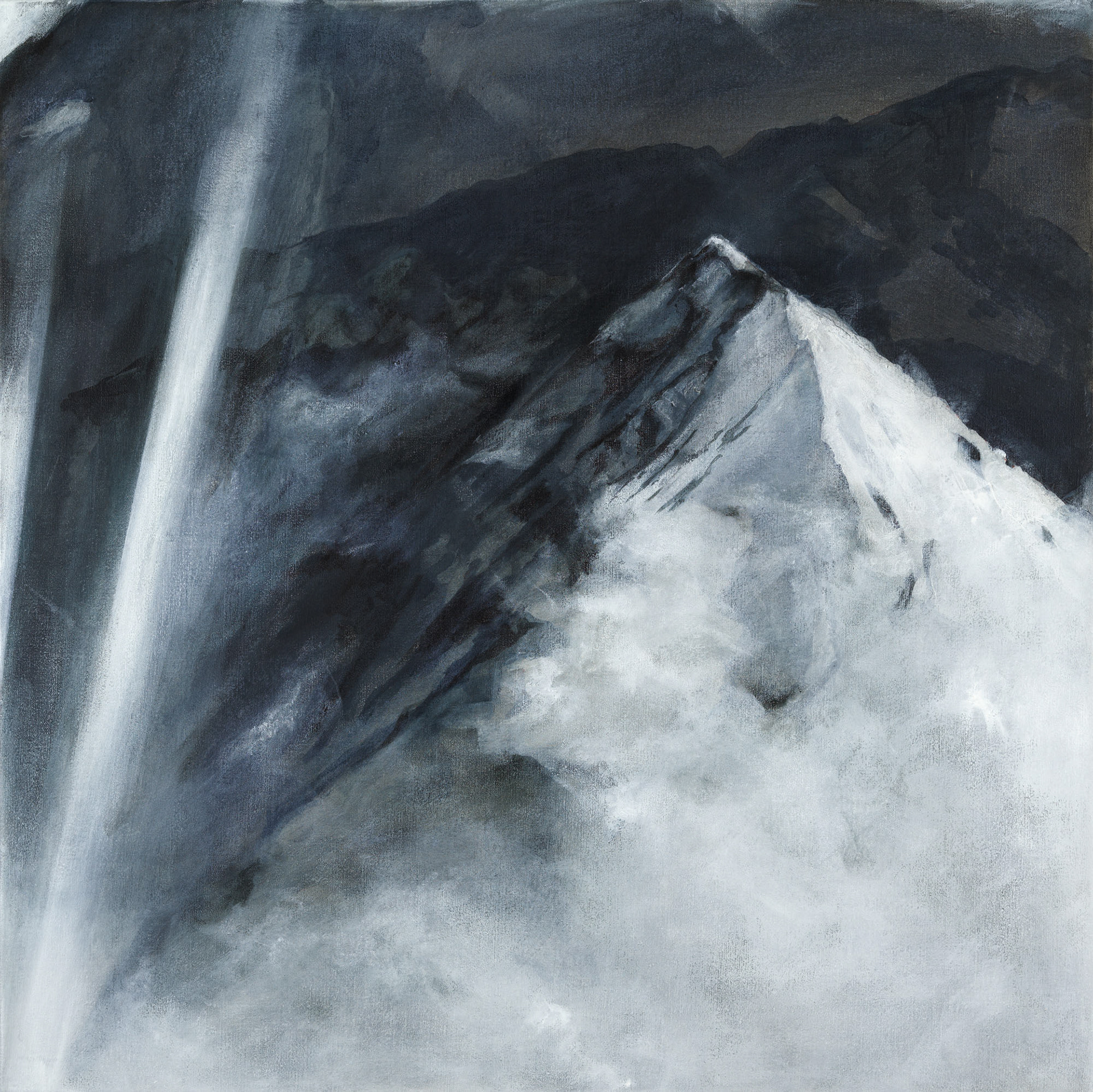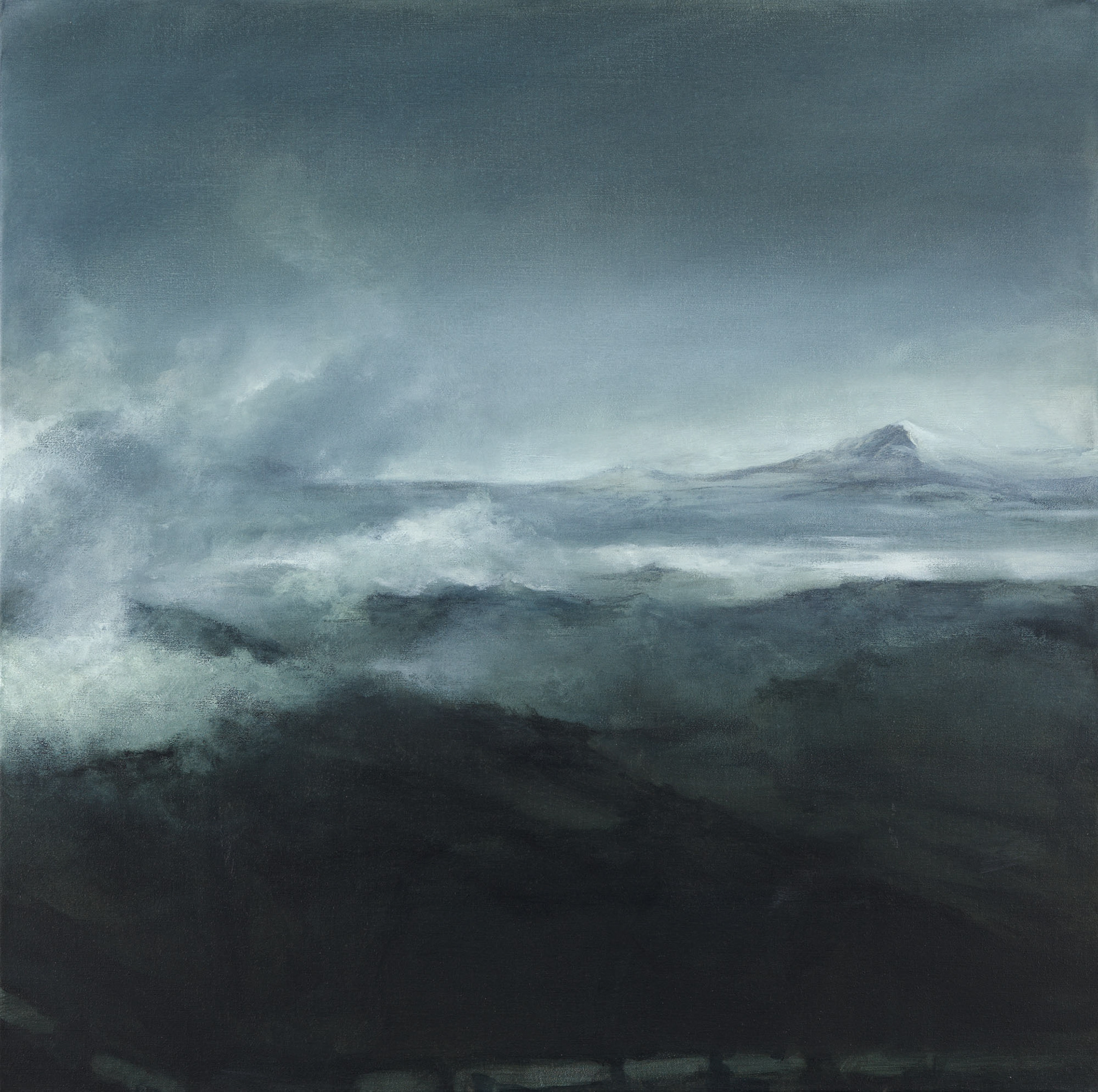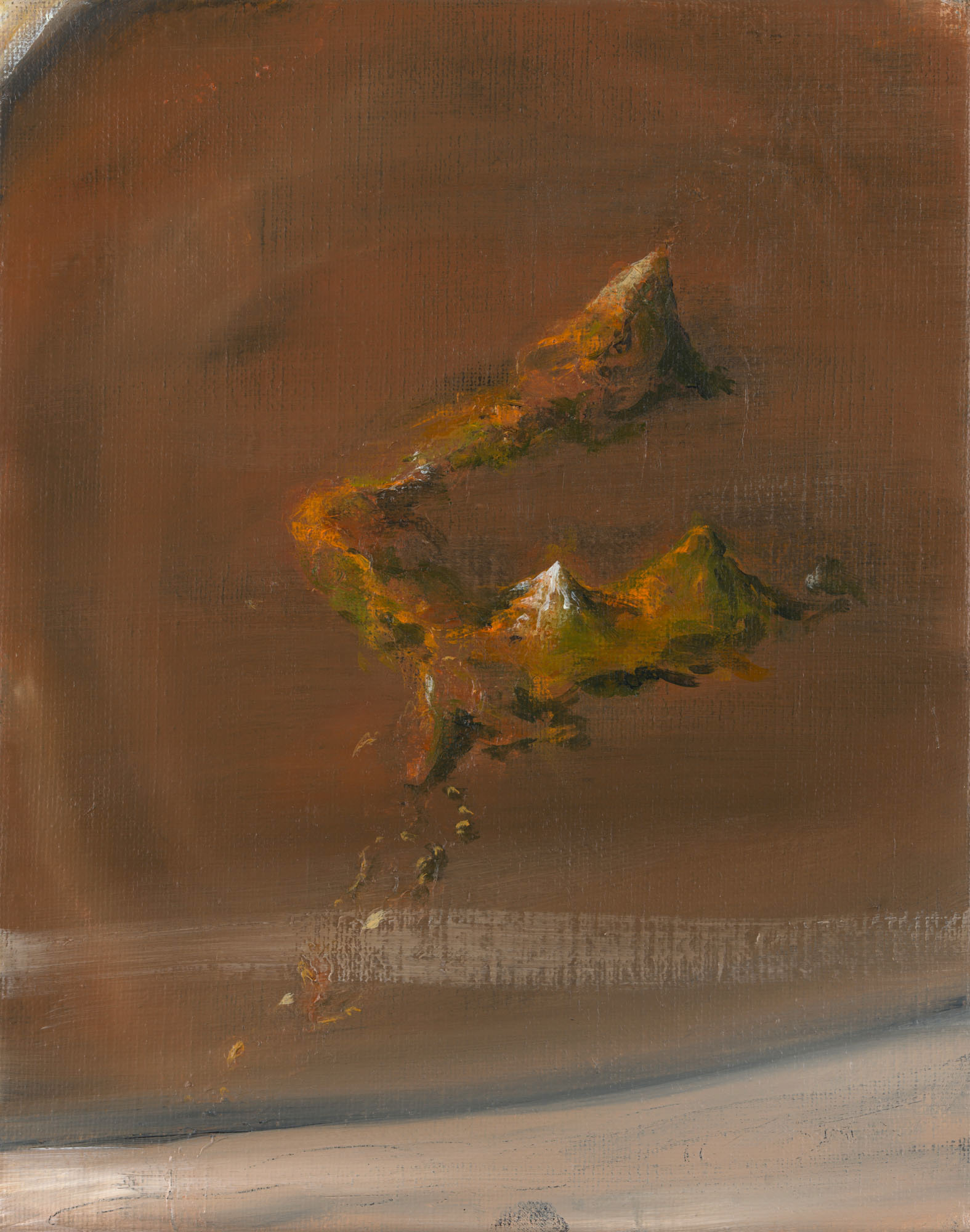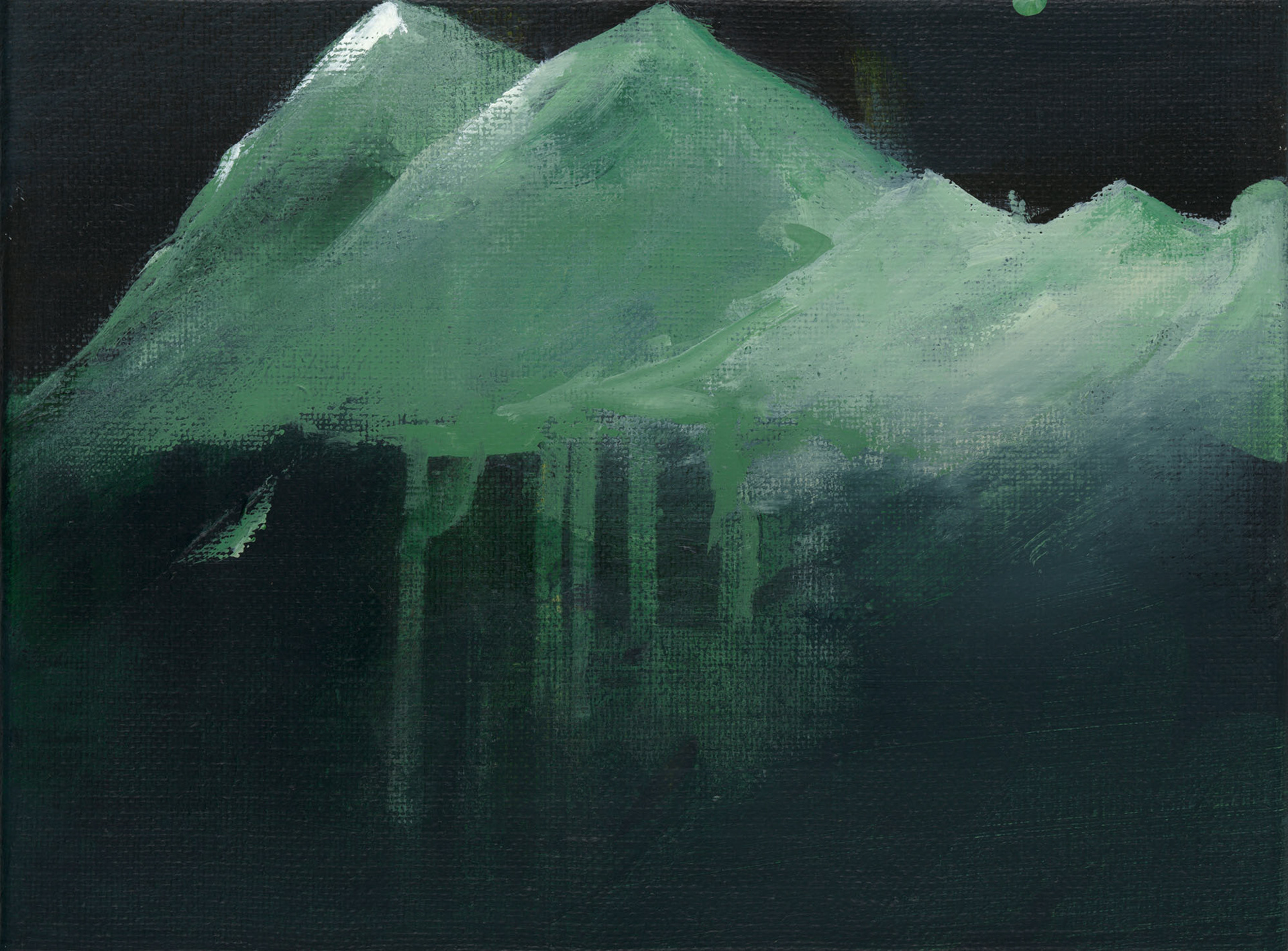From: ' A passage through Reniere&Depla’s mountains' by Eleen M. Deprez and Michael Newall
Ruskin preferred summer in the Alps, when the underlying geological order of the mountains was more apparent. But even though Ruskin may have denied it, once the composition and story of the mountain has been read, the white fantastical phantoms that first attracted our attention can retain their sense of wonder of wonder and sublimity. The series of mountain works that Reniere&Depla present here include all kinds of mountains, but they tend to prefer snowy forms. Some appear as furnishings in the landscape, or geological ornaments, others as seem to present themselves as protagonists in a drama. Mountains are seen from train windows or hiking trails, others from an aircraft window or cockpit. Some, like appear isolated in a desolate alien landscape, or other-worldly small as if Reniere&Depla looked at them through a magnifying glass. Some, such as M.V., 17/M seem to hide a playfully Tobleronesque form beneath a Ruskinian veneer. Others are drawn over or into photographs of disparate subjects. Some put one slightly in mind of playful models made from fabric or paper. A few seem to cluster in couples or families – sad, loving or hopeful, suggesting friends, lovers, or family. Here we can think of the Glass House Mountains, rising above the Queensland coast, which the local Aboriginal people see as spirit ancestors: Mt Tibrogargan the father, Mt Beerwah the mother, and the others, their sons and daughters. Together they play out a petrified family psy- chodrama of anger, shame and remorse. Reniere&Depla’s mountains too are seen playing out small and big dramas: kissing under the stars, strolling leisurely, or conspiring in the moonlight. M.V.,10/V and M.V., 08/V, remind us of volcanic islands. Dormant, with a rounded dome of rock keeping magma trapped beneath it. A trail of sulphur floats off in the sky. In Ejaculating Mountain a puff of vapour and ash emerges exuberantly from a lonely snow-faced mountain. Reniere&Depla’s volcanic mountains might put one in mind of the tiny cones tended by the little prince in Antoine Saint-Exupéry’s novella – fantastic and absurd follies.

M.V. 01/A














